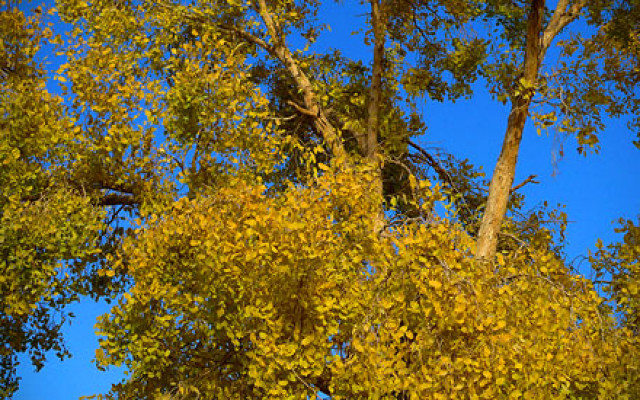Poplars increasingly popular with farmers in Galiyat
Prices fuelled by demand for trees in Afghanistan.

Poplars are increasingly the first choice for farmers in the lush-green belt of Nagri Totial and surrounding villages in Galiyat.
Farmers are of the view that the plantation of poplars commonly known as sufaida involves less labour and less money in return for greater profit.
Critics fear that poplars suck excessive water and deplete water sources. Owing to the negligible risk and high profits in planting poplars, some farmers have decided to opt for poplar-based agro-forestry.
Interestingly, the Khyber-Pakhtunkhwa (K-P) forest department, particularly in Hazara division is supporting the move and has made arrangements for free distribution of plants to farmers through village committees.
“We are encouraging the cultivation of poplars and establishing nurseries as they are a good source of income and firewood,” said Sardar M Sultan, conservator divisional forest department Abbottabad.
“We give plants free of cost to all farmers along with professional advice,” he added.
A visit to Nagri Totial, Jasia and surrounding valleys in Galiyat reveals that poplars have been planted on hundreds of kanals of arid land which was earlier used for cultivation of rabi and khareef crops.
Contractors dealing in poplars have entered into agreements with landowners to cultivate the trees in various parts of K-P.
“We are happy since poplars will prove to be more profitable than crops,” said Mansoor Ali Khan, the raja of Jassya village.”
I have planted around 35,000 poplars on barren land, because the crop yield was low, Khan explained. “In another three to four years I will be able to earn more than Rs10 million from the sale of these trees,” he predicted.
Farmers in the valley of Nagri Totial in Galiyat have planted poplars on the outer boundaries of their fields while cultivating rabi or kharif crops in the fields.
However, according to Abid Swati, a forest expert in block plantation of poplar, kharif crops can be grown for two years only after which shade-bearing crops like ginger or turmeric have to be planted. “Rabi crops can be grown as usual,” he added.
Ilyas Murshad of Nagri Totial has planted around 25,000 poplar trees and would like to cultivate more. “I brought the plants from Tarnab Govrnment Farm near Nowshera and it came to Rs25 per plant including transportation costs.
“I’m now planning to establish a nursery so that farmers do not have to go to Abbottabad or Tarnab,” he added.
Replying to a question, Murshad said that the wood is used for making matchsticks and factory owners give a handsome amount for poplar. “Factory owners contact the farmer and book their orders in advance when poplars are a year old,” he added.
“There are no restrictions on poplar trees of exotic species, but rules and regulations for indigenous poplars should be extensively reviewed to encourage their plantation,” said Abid Swati.
He also warned that large-scale cultivation of poplars without guidance by experts can deplete underground water sources.
Divisional Forest Officer Abbottabad Haji Hanif said due to heavy demand from Afghanistan poplars are being cultivated in K-P, especially Hazara.
“Kabul has been practically denuded and the Afghan government has asked for fast-growing trees for match factories and for firewood,” he said.
Hanif also disclosed that contractors are offering a minimum of Rs30,000 for a poplar tree for Afghanistan. However, he cautioned farmers not to cultivate poplars without professional advice.
Forest experts are of the view that there should be a regulatory mechanism to ensure the supply of certified nursery stock to growers to exclude genetically inferior plants.
Published in The Express Tribune, April 21st, 2012.













COMMENTS
Comments are moderated and generally will be posted if they are on-topic and not abusive.
For more information, please see our Comments FAQ